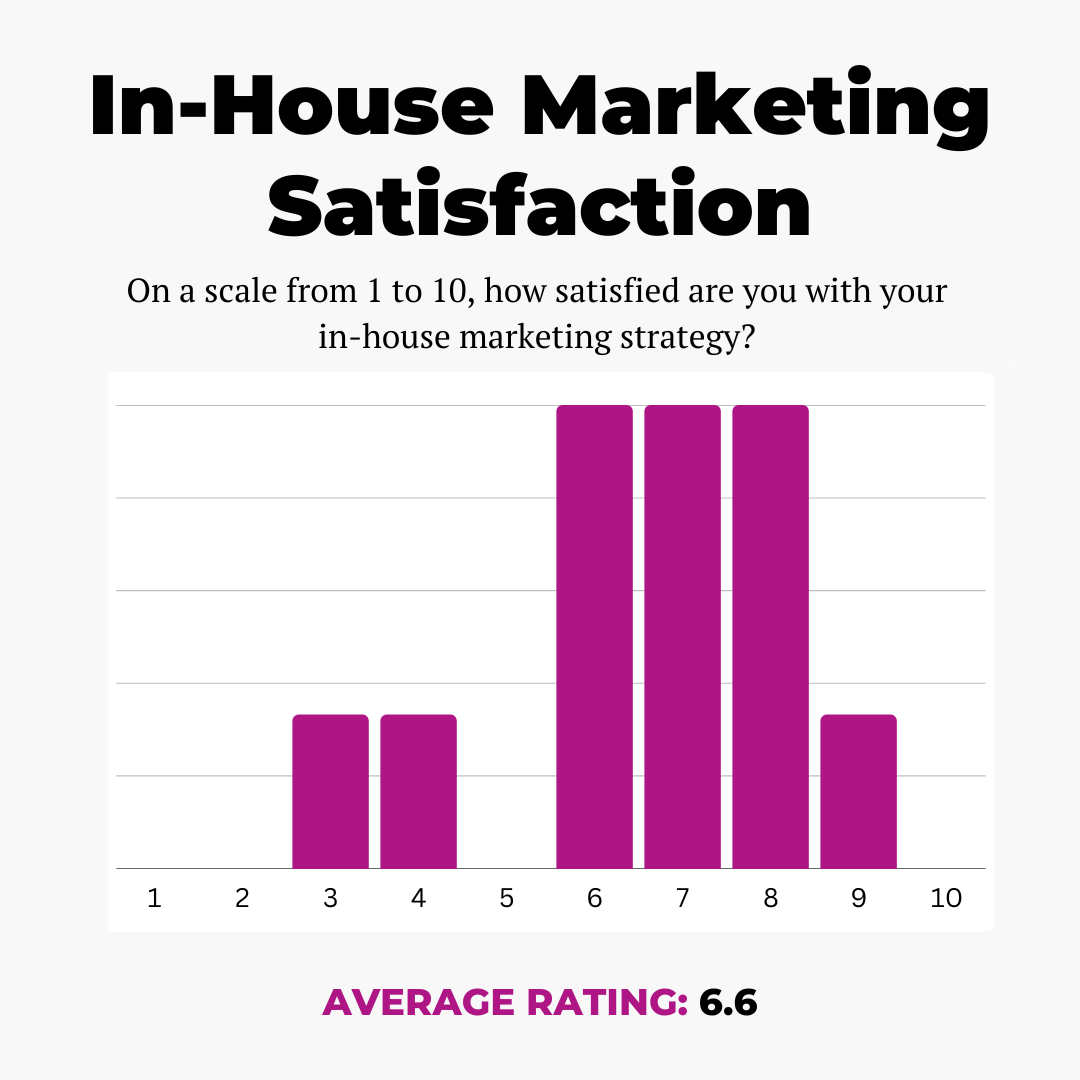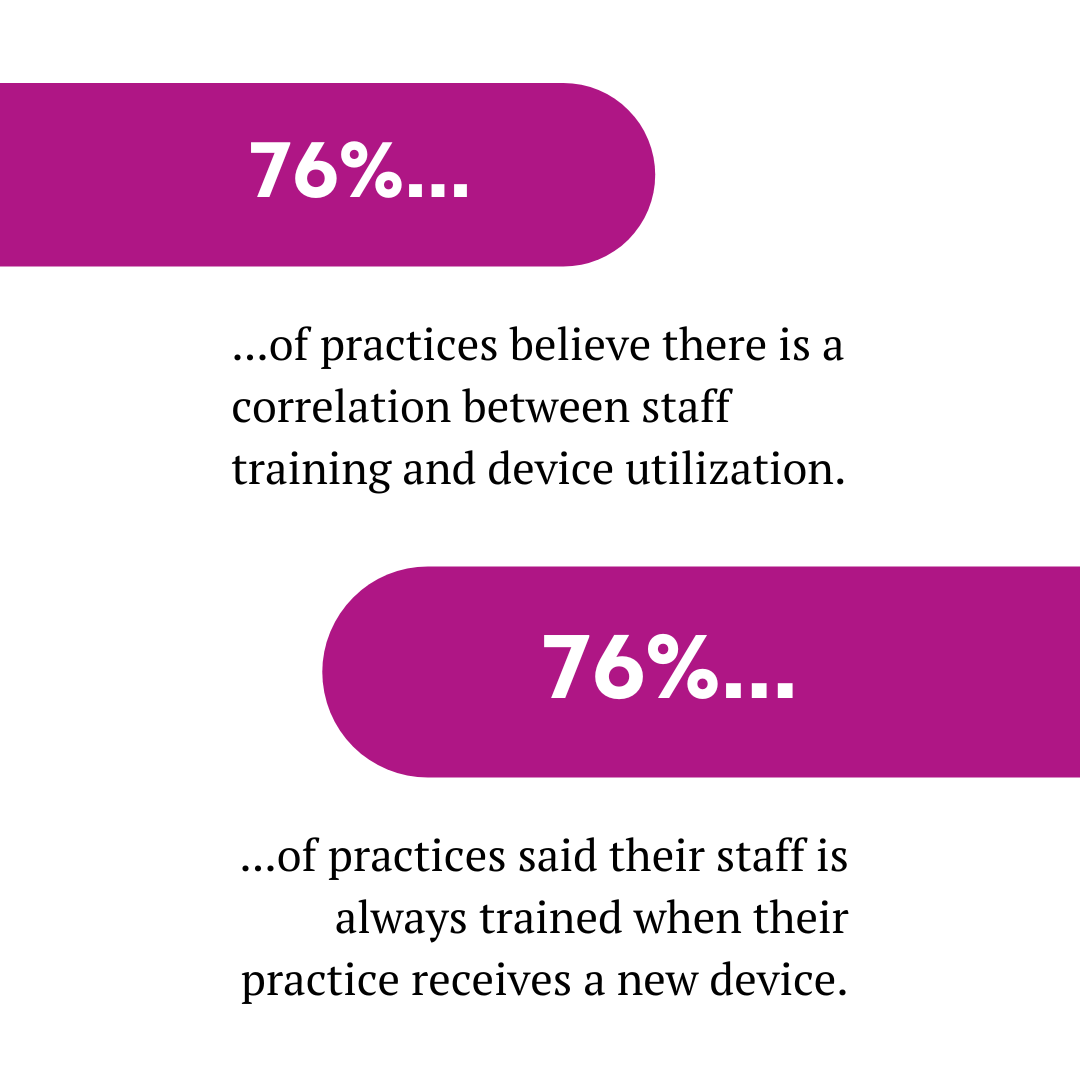| Editor’s Note: This article is part of our three-part series titled “The Device Economy.” In this series, we tackle what owning a medical aesthetic device will actually cost and generate your practice, if your office is a good fit for a new medical device and what to do after you’ve made the purchase. Here are links to all three parts: Part 1: The Real Economics of Medical Devices Part 2: Should I Really Purchase a New Medical Aesthetic Device? Part 3: For Reals, I Just Spent 100K On a New Device... Now What? |
Short on time? Read the TL;DR.
We hold these truths to be self-evident: that all practices are not created equal; that they are endowed by their marketing programs with certain unalienable advantages; that among these are larger revenue streams, deeper patient pools, and the pursuit of a successful practice…

A true-to-life, definitely 100% accurate depiction of Thomas Jefferson dreaming up the first medical device … probably.
So, you wrote the check, signed the contract, gave up your firstborn — whatever it took to get that new medical aesthetic device into your practice. The price was probably steep, but you are ready to start generating some cold, hard cash from your most recent investment.
Well, hold on just a second there, boss. How exactly do you plan to do that?

Maybe you worked with some incredible marketing agency to develop a solid plan of attack before you even purchased that device. If so, kudos to you for being on top of it. But for those who didn’t, setting up your device for success is generally an afterthought to purchasing it.
(Did we really just link to our own homepage in our own article?)

Not the best approach to take when you just invested tens, maybe even hundreds of thousands of dollars and need to start making a quick return.
It’s a scene that’s all too familiar in our industry, but, luckily, in Part 3 of this device economy series, we are going to walk you through exactly what you need to do after you purchase that new device — and even some stuff you should have been doing beforehand.
You Are the Superhero — Let the Device Be Your Sidekick
We are sorry for breaking it to you, but your practice isn’t special for having a medical aesthetic device, no matter how many first borns you traded for it. Odds are that many practices around you have similar devices at their disposal as well. So why, then, would you want to rely on the prestige and notoriety (or lack thereof) of a specific medical device when trying to bring in new patients?

Easy answer: you shouldn’t. Always remember that you are Batman, and the medical devices that you use are Robin. (Or the combat devices Batman uses. It’s hard to say which is more useful.) The point is, you are the superstar of your practice, and your unique skills and talents are way more marketable and compelling than the name of any medical device.
You have to be different in order to shine. And if you are advertising and promoting that you just got a new [INSERT GENERIC DEVICE NAME HERE], then you aren’t really giving anyone a reason to visit you over “half-rate Rick’s Medical and Laser Spa” down the road.
After all, why would they visit you when you both are claiming to use the same device and provide the same results?
Focus On Your Talents

Your emphasis in all of your marketing collateral should be specifically on what you can do with that new device. What symptoms can you treat, how much faster can you perform treatment, how much can you improve on previous results? The device enables you to perform better, so what are those improvements?
Your unique ability to completely treat minor to moderate skin discoloration in 45-minutes because of your skill and artistry in the field is much more compelling than being told you are “Now offering Skin Solution’s Resurfacing Solid State X Elite Ultra Nd:YAG Limited Ultrawide 4K 5GLTE Mini Pro now with Broadband Connectivity.”
Oh, we forgot to mention, it comes in Space Gray.
Even Superheroes Do Their Market Research

You think Clark Kent was out there writing journalism and investigating his enemies without looking into the facts? You think Tony Stark wasn’t constantly considering all business aspects of the Avengers team? You think Batman, the prince of preparation himself, wasn’t running analytics on his competitors?
Think again, ma’am or sir.
Even when you are the superhero of your practice, you have to put in the work to figure out exactly what kind of economic return you should expect. There are a few different facets to analyze when figuring out how much you should charge, such as suggested retail value, geography and possibly the most important, your unique brand.
Suggested Retail Value. Speaking of market research, medical aesthetic device manufacturers do a ton of it when coming up with their suggested retail price. You should definitely weigh this recommendation pretty heavily. They have figured out what many consumers are likely willing to pay, and this suggested value will be influencing what other practices charge as well. Price too low, and you are losing valuable revenue; price too high, and you might be driving patients away from your office. Price, like life, is about balance.
Geographic Location. If you are from Beverly Hills, you should charge Beverly Hills prices. If you are from a more rural location, you probably don’t want to base your treatment costs on what people in LA or Miami are charging. To begin with, there is less competition in your area, meaning prices aren’t likely to get raised from a quality of work standpoint. You can be the best in the world, but your customers won’t have a great frame of reference for why you can charge 15% more than someone a town or two over. Secondly, some people in suburban or rural areas simply don’t make as much money on average since cost of living isn’t as high. You don’t want to price out your potential patients before you even get started.
Understanding Your Practice’s Brand. Are you a champagne in the waiting room kind of practice? Or do you care more that people feel comfortable and at ease when being treated by you? Both options provide an experience that many people seek out. You also have to think about your social media presence and image and how people would feel if you charged above the industry average. What are your reviews like? Do people rave about your results? How do patients feel about your practice? All of these are important to understanding your own pricing parameters.
A Quick Guide to Marketing Your New Medical Device

Clients who handled their own marketing strategy rated their satisfaction with their own programs on average with a 6.6 out of 10. Look, if we were taking this back to high school, those scores would earn their diploma … but they definitely wouldn’t be getting into college.
And med school? Completely out of the question.
If you weren’t okay with scoring a 66% in school, it might bug you a little bit to be in the D-zone for your own business’ marketing. Don’t take it too harshly, though, they don’t really cover effective medical marketing in a lot (or any) medical programs, so we will get you up to speed.
Digital Marketing
If it happens on the internet, it’s probably falling under the category of digital marketing. This is your bread and butter when it comes to getting exposure for a new treatment or product you are offering. There are some pain points that many practices hit, however, so we wanted to break them down and make them much more easily digestible.
After all, we aim to be the “no Tums needed” kind of content creators.
Creating Device Content
We know content creation can be an arduous process if you aren’t in the groove of things. But when you go to market your devices on digital platforms, you really can’t be successful unless you have well-thought out and intentional content marketing plans.
Choosing Your Platforms. Should you focus your efforts on your website or social media? Or both? If you do engage in social media, which ones should you use? Short-form video content on TikTok TikToks, Instagram Reels, or YouTube Shorts? Imagery and engaging captions for Facebook and Instagram? Want to throw it back a few years to when Snapchat was relevant?
(Just kidding, Snapchat, you know we love you.)

The right platforms for your device will depend largely on the audiences you are hoping to reach. Younger audiences are more easily accessible on Instagram, whereas older generations might be more present on Facebook. If you really want to zero in on raising awareness for your practice, exposure on TikTok is basically second to none.
Consider your marketing strategy what you are hoping to achieve, and then use all of the available platforms to your advantage. There is a ton of flexibility here, but we will say this: all roads should lead back to your website. It’s your home base where you have the most control and influence, and if implemented correctly, will serve you well as a final destination.

Best Practices and Beyond. Three quick tips from a team that creates this type of content effectively around the clock:
- You should always, always, always be creating your content ahead of time. If you know you are going to be making a medical device purchase, start working on creating the content immediately. This way your strategy is in place as soon as it hits your office — hell, you might even have some appointments booked. Rule of thumb: it takes four to six weeks of marketing a new device before leads start to flow in.
- Never use portal content or templates. It doesn’t stand out, isn’t optimized for your brand or audience and is duplicated content (which can hurt your SEO and discoverability). It’s never really worth it.
- Focus on practical benefits, not technical details. We mentioned this already, but seriously, stop trying to get your patients to care about the wavelength of a device or some other technical fact. All they want to know is how the new device can help them.
| Not Useful | Useful |
|---|---|
| Wavelength of 12.650 nm | Ability to provide advanced facial resurfacing |
| Red diode Laser, 655 nm | Highly precise treatment targeting |
| Energy Variable from 1 – 22 m | Provide improvements for multiple conditions |
To Microsite or Not to Microsite

“Doth thee und’rstand the pow’r of valorous marketing?”
A microsite is a branded site that has content focused solely on that one product. It is usually a single webpage, but it can also be a small group of pages in some instances as well. While your larger site is a hub for your entire office, the story of your brand and all the services you offer, a microsite is focused on moving people down the funnel on a single treatment.
Here are some microsite pros:
- Flexibility in the web page design — you aren’t beholden to your main site’s structure and can really zero in on providing info about your desired service.
- Visitors are more focused on the treatment at hand — nothing on the site pulls them away from the funneling effort.
- Clear tracking and analytics — you can see exactly how people on that page behaved without worry about them coming from different parts of your main site.
Here are some microsite cons:
- You have to pay for them — hosting, design, SEO, content; all of these components come with a price tag, even if they can help you boost your sign ups.
- They can confuse your potential patients — if someone expects to be able to visit components of your main site from the microsite, they may leave feeling frustrated if proper exits aren’t in place.
- They are high-risk for SEO dings — Many people rushing a microsite will stuff it with keywords and sales tactics without letting it provide any actual value. This means shallow content that isn’t helpful and potentially a big backhand from the Google algorithm.
Figuring out if a microsite is right for your device comes down to these pros and cons, the goals you set for your treatment and, really, the amount of financial investment you are willing to make to promote your new device.
Ads, Ads, and More Ads

Unless you have the organic social media reach of a celebrity physician, your own following alone isn’t enough to kick your new device into full motion. It is highly likely that you will need to run a substantial advertising campaign to find those potential patients interested in your service.
How and where you do it is another question entirely. We have some info about dominating TikTok ads available on our TikTok Revolution series if you are interested in doing that platform, but if you need similar information about a different platform, you can always reach out to us for some guidance.
In-Office Marketing
It’s a little less complicated than the digital marketing stuff, so we can break down the necessary components of in-office marketing in these bullet points below:
- Your staff is your sales rep team. We dive deeper into this below, but always remember that your staff is getting an abundance of facetime with your patients and can do a lot to promote your products.
- Plan spectacular device events. Or work with a partner to help you plan those events as part of your marketing program. This stuff should be promoted on your digital platforms, but ultimately we categorize it as in-office since, well, it happens in your office.
- Use your screens effectively. FriendMedia and similar companies can help you turn your monitors and TVs into effective marketing for patients who are already visiting your office. Someone coming in for Botox might just catch the ad for your new device and make an inquiry — and those are the easiest cross-sells you could hope for.
Training Your Staff
Alright, we know we mentioned it briefly in the previous section, but now we get to dump some 🎶 quantitative stats on you. 🎶

So here’s the big one: 76% of practices believe there is a correlation between staff training and device utilization. We asked respondents to elaborate on their responses after answering, and most people agree that their staff has to have a complete understanding of the device in order to recommend it to patients effectively.
One of the providers answered our question with another question: “If they don’t know about the device, then how are they going to sell it?”
Rachel Beavers from Vitahl Medical Aesthetics also said the following:
Without hands-on training, we would not delegate our staff to perform the treatment. We also let most of the staff get the treatment so that we have people who are excited to speak about the device and what it does. Many times we will schedule a follow-up training or bring in another model for practice. Our clinical staff feels more confident performing the treatment if they have two opportunities to learn.

Interestingly, 76% of respondents also said their staff is always trained when their practice receives a new device. An additional 16% said they are usually trained, while only 8% of the medical professionals who participated said they train their employees sometimes or rarely.
TL;DR
Focus on what you can do with your device, not the technical specs. Do your market research before deciding on a cost, what platforms to use or what content to create. Create and implement a marketing plan 4 to 6 months before you want to see leads. Funnel as much as possible into our website. Microsites can be hugely beneficial to your campaign, if you can invest in them. Ads are stupid important, but don’t forget about in-office marketing as well. The screens in your waiting room could be some of your biggest cross-selling tools. Train your staff to improve usage, live long and prosper.
Let’s Market Your Device and Get You Some Patients
At the end of the day, your main goal is probably pretty simple: get patients through the door and into your treatment office for whatever new medical aesthetic device you invested in.
Straightforward? Yes.
Easy? No.
Hopefully, after reading these three parts of this Device Economy series, you are better prepared to make a decision about purchasing a device and more informed about how you should market it both prior to receiving and once it is finally in your hands.
More of a visual learner? Don’t stress it, Part 4 is an easy-to-follow infographic with all the stats you could want.
If you are still feeling like all of this is as confusing as the handbooks that come with your medical devices, feel free to reach out to us for some help. As usual, our educators are here to answer any questions you have, anytime, for free. Give us a call at (800) 949-0133 or schedule a one-on-one.




